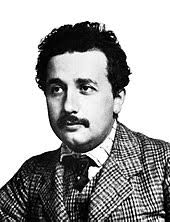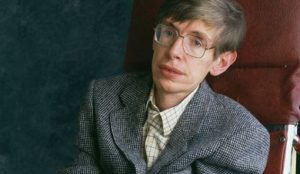Literature and movies
Time travel has been the subject of a great deal of literary, film and television work, from the famous “The Time Machine” by H.G. Wells (1985) to the recent series “El Ministerio del Tiempo”, broadcast by La 1 of Spanish National Television (TVE).
In particular, we have the emotional novel The Time Traveler’s Wife, written by Audrey Niffenegger and published in 2003. It has been classified as a work of romantic science fiction and uses time travel as a metaphor for miscommunication and the difficulty of human relationships. It was awarded with the British Book Award and was adapted as a film in 2009.
It describes the relationship of Henry DeTamble and his wife, Clare Abshire. Due to a strange genetic problem, Henry involuntarily travels through time frequently, causing a multitude of shocking and sometimes conflicting situations. Thus, he meets Clare long after she has met him in the past, as a child; he meets future versions of himself in the present; and he dies by accident at a relatively young age, although Clare still sees him from time to time. The film version of the novel was directed by Robert Schwentke, starring Eric Bana and Rachel McAdams. Critical acclaim was uneven, with an approval rating of 45%.
As in many other cases, the story told in the novel and in the film is not coherent: the protagonist jumps back and forth in time seemingly with the same frequency and ease. But today we are almost certain that it cannot be just as easy. In fact, we suspect that the leap backwards is in practice impossible on a perceptible scale, while the leap forwards, letting us go in the same direction as “our time” moves forward, is within our reach. All this will be justified in the following paragraphs.
Einstein
Albert Einstein was perhaps the most important, well-known and popular scientist of the 20th Century. He became worldwide famous, something that has been available to very few men or women in science.

In 1905, as a completely unknown employee at the Bern Patent Office, he published his Special Theory of Relativity, which described the motion of bodies and electromagnetism in the absence of gravitational forces. This theory is now considered to be the most accurate physical model for describing bodies in motion when gravitational effects can be neglected. Classical Newtonian theory is valid as a simple, intuitive and more than sufficient approximation when velocities are small relative to the speed of light.
Ten years later, when he was already well known, he presented the General Theory of Relativity in a series of lectures. It claims that all observers, regardless of how they move relative to each other, are equivalent. The great idea lies in the interpretation of gravity not as a force or action at a distance, but as a consequence of the curvature of space-time. In other words, space-time is postulated to be a Lorentzian manifold of dimension 4 that “curves” more or less as a function of the mass distribution (and the corresponding perturbations in space-time are identified with gravitational effects). And the law that tells how the space-time metric depends on the mass distribution can be formulated as a complicated system of non-linear PDEs, now called field equations, or also Einstein equations.

The first exact non-trivial solution of these PDEs was found by Karl Schwarzschild in 1916 (the Schwarzschild metric). It features a singularity that is interpreted as a gravitational collapse; it is the first example of what we now call a “black hole”. The Schwarzschild solution was generalised in several papers published between 1916 and 1921 by Reissner, Weyl, Nordström and Jeffery, who were thus able to describe electrically charged black holes.
Being a man of uncommon acuteness, Einstein was also notorious for his opinions, which he expressed in a multitude of articles, interviews and lectures. Here are some of his quotes that, almost a hundred years later, are still relevant today (for other quotes by Einstein, see the posts An eschatological view of bureaucracy, Hookers, dung and University and The exquisitely stupid questions of reporters in this Blog):
-
Private capital tends to concentrate in a few hands, partly because of competition among capitalists and partly because of the inclination to form larger units of production at the expense of smaller ones.
-
Nationalism is an infantile disease. It is the measles of humanity (answer to the question whether he considered himself German or Jew, 1929).
-
I don’t know what World War III will be like, but I know what World War IV will be like … with stones and sticks (from an interview in 1949).
-
Two things are infinite: human stupidity and the universe; and I am not sure about the latter.
Hawking

Stephen William Hawking (1942-2018) was a celebrated British physicist and science populariser. He is well known for many reasons.
Among other contributions, it is worth mentioning those he made together with Roger Penrose on the analysis of the space-time singularities predicted by the General Theory of Relativity. He was particularly interested in the possible unification of this theory with Quantum Theory. In particular, he proved two important consequences of a unified theory: (a) that black holes must emit radiation and eventually evaporate and disappear, and (b) that the Universe has no boundaries or limits in time. Thus, the “beginning” of the Universe would be explained by the laws of physics.
Hawking also left us witty quotes about different aspects of science and life. Here are some of them (for other Hawking quotes, see the post Sexual connotations of Eureka in this Blog):
-
I have noticed that even those people who claim that everything is predestined and we can do nothing to change it, look before they cross the road.
-
We are just an advanced breed of monkeys on a minor planet of a very average star. But we can understand the universe.
-
I’m happy that John Paul II didn’t realise that my talk was about how the Universe began. I am not seduced by the idea of being handed over to the Inquisition like Galileo.
Hawking once claimed that there must exist a law making time travel impossible. He proposed the so-called Chronology Protection Conjecture, which he said would “make history safe for historians”. However, much later, after deep reflections on the subject, he ended up saying that “time travel may be possible, but it is neither practical nor easy”.
The Theories of Relativity (Special and General) provide clues for building machines that allow time travel. In fact, according to Hawking, there are at least three ways to do it (or at least try to do it). Reader, if you want to know what they are, be sure to read the next post …
Learn more
-
H.G. Wells, The Time Machine, Henry Holt and Co., 1985.
-
A. Niffenegger, The Time Traveler’s Wife, Macadam Cage Pub, 2003.
-
A. Einstein, On the Electrodynamics of Moving Bodies (translation from the original), Annalen der Physik. 17: 891, 1905.
-
A. Einstein, Lectures at the University of Berlin, Sitzungsberichte der Preussischen Akademie der Wissenschaften zu Berlin, p. 844-847, 778-786, 799-801, 831-839, Nov. 1915.
-
K. Schwarzschild, On the Gravitational Field of a Mass Point according to Einstein’s Theory (translation from the original), Sitzungsberichte der Königlich Preussischen Akademie der Wissenschaften zu Berlin, Phys.-Math. Klasse 1916, 189-196.
-
A.J. Durán, El Universo sobre nosotros, Crítica, 2015.

Leave a Reply